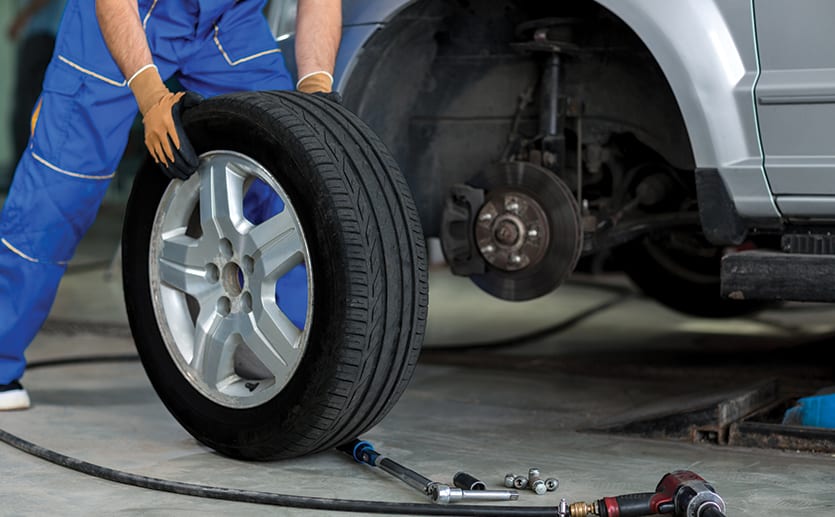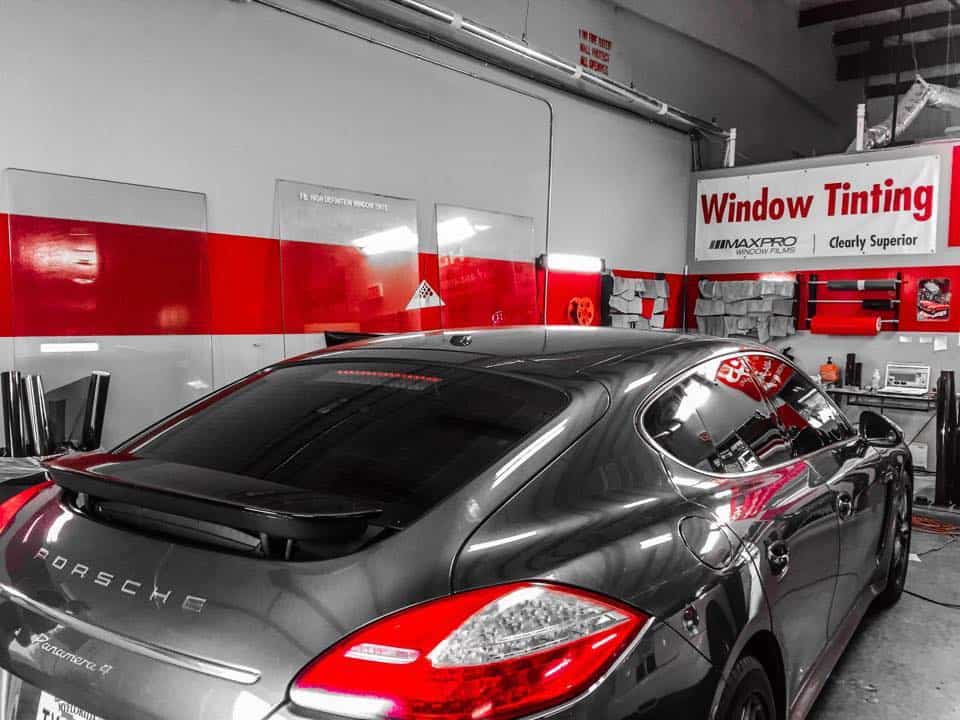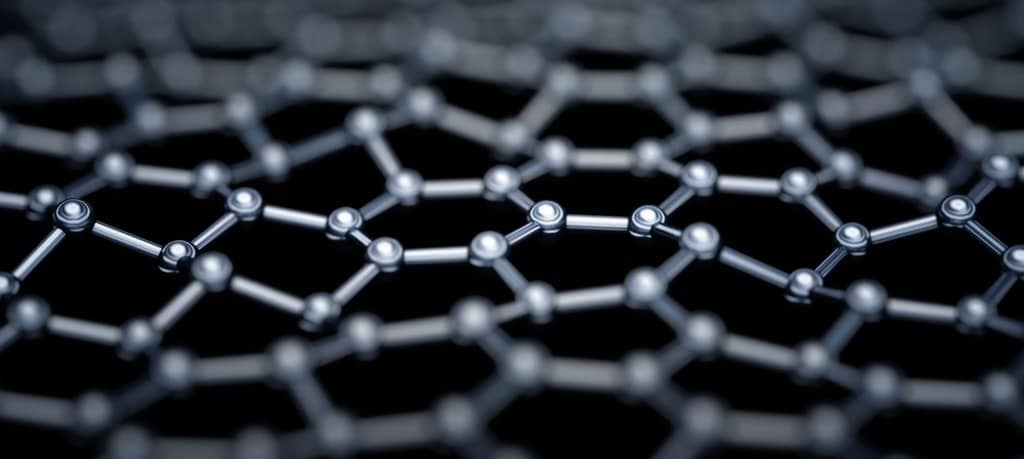Do your vehicle’s tires look like oversized dirt-brown powdered donuts? Have those rubberized rollers been dunked in mud puddles, and then rolled in a rich blend of road salt, brake dust, grime, tar, exhaust soot, and every other form of filth imaginable? Perhaps it’s time to give that rubber a deep cleaning, followed by a protective coating courtesy of a quality tire shine product.
Scrubbing and polishing will only get you so far, and so the need for a “tire dressing” is brought to the forefront. But is a tire shine product engineered to only add “shine” to rubber? Or are there other benefits to slathering this stuff on your tires?
Let’s review a few options, and more importantly, discuss the benefits of using a tire shine product. While we’re at it, we might as well discuss issues that may arise when using tire coating products. We’ve come a long way since the days of aerosol spray cans filled with tire foam, and yes, there’s a lot more to this stuff than meets the eye. Remember, our goal here at AvalonKing is to not just armor your vehicle with the best ceramic coating on the planet, but armor you with as much automotive knowledge as possible. So let’s get rolling shall we?

Tire Talk 201
In order to better explain the various parts of a tire that you will be coating, a paper released by the U.S. Tire Manufacturers Association must first be brought forth. Originally drafted as a way to inform the public about the various compounds and components found within the tires we ride atop every day, this write-up is an easily digestible serving of tire talk, with the following being the focus of today’s topic.
Sidewall
The rubberized compound that covers the body plies running along the sides of the tire is appropriately named the “sidewall.” Designed to both help maintain a sturdy structure, and prevent abrasion and weathering, the face of the sidewall is where tire shine is most commonly applied.
Natural Rubber
The original tire compound continues its reign, as natural rubber refining procedures enhance sticky performance characteristics with tear and fatigue crack resistance capabilities.
Synthetic Polymers
Butadiene rubber and styrene butadiene rubber are currently the most common synthetic forms of rubber found within tires, which when combined with natural rubber, make for an extremely pliable yet rugged material. Once processed and formed within a mold, both the physical and chemical properties of synthetic rubber polymers impact tire performance. Things like rolling resistance, projected longevity, cold weather traction, and high speed stability are all influenced by these polymers and the ways in which they are blended and formed.
Antioxidants
The presence of antioxidants prevents rubber from prematurely breaking down due to temperature fluctuations and oxygen exposure.
Antiozonants
Exposure to ozone along the surface of a tire can cause it to deteriorate at a more rapid pace, therefore antiozonants are used to offset these effects.

What Are the Benefits of Tire Shine?
So does a tire shine product do anything other than add a slick-looking surface to the materials mentioned above? That depends upon the product. A high-quality tire shine won’t just add a wet look to your sidewalls. It will serve as a tire surface cleaner, imparting protective properties upon the rubber it touches, and leaving behind a glossy black finish.
When we say “protective properties,” we mean a tire cleaner with the ability to not only remove dirt, muddy water, brake dust, road grime, and a multitude of other unpleasant substances, but repel them as well. By preventing ground-level griminess from sticking to a car tire, you not only retain impeccable aesthetics, but a longevity rate that mirrors or surpasses the tire’s projected warranty. This translates to you not having to buy new tires as often, which in turn saves money.
Another danger to tires is sun damage caused by exposure to UV rays. While modern advancements in the development of tougher rubber and the use of synthetic compounds and plastic polymers has helped reduce tire rot, UV damage is still very much a threat. Tire shines help protect against UV ray damage and fading, and will help replenish the surface with oils in order to prevent cracks.
Finally, there’s the benefit of having an aesthetically pleasing tire, which oddly enough, is oftentimes more of a priority for car owners than cleaning and protection. Today, you will find that there is a wide array of available finishes to choose from, with everything from extreme shine, to satin and low gloss being up for grabs. Just note that many of these products come with a warning: The longer you allow a tire dressing to soak into the sidewall, the richer or shinier the finish.
Quick Nerd Note: According to a report conducted by National Geographic, the modern tire only utilizes 19% natural rubber, with 24% of its remaining production material being a plastic polymer of some sort. As for the other 57%, that’s typically a mixture of metal, Kevlar, and other stiff man-made materials.
Spray vs Gel: Get to Know the Tire Shine Dynamic Duo
Spray-On Tire Shine
When it comes to tire shine spray cleaner products, ease-of-use and dexterity is the name of the game. But while spray-on tire shine products may be easy to apply and can quickly coat almost any area, they are not known for their longevity. Most tire spray shine products consist of a blend of oils and polymers suspended in water, which means that they will not last nearly as long as gel-based alternatives.
Gel Tire Shine
As opposed to spray-on tire shine products, gel shines are a squeeze bottle solution that allows greater control, but requires more elbow grease. How much you use and what parts of the tire gets coated is entirely up to you. Just note that more time must be spent applying this type of tire shine, and that it will not reach the crevices that are easily coated by a spray-on application. On the bright side, gel tire shines tend to last much longer, so the trade-off is worth it if longevity is your objective.

Tire Shine Pre Install Checklist
- Thoroughly rinse each tire and wheel with clean water and spray them with a cleaning agent that has been approved safe to use on your wheel’s coated surfaces. This will help remove any loose contaminants and scuzz that may be sitting on the surface.
- Scrub both the wheels and tires with a stiff brush, preferably one with long nylon bristles in order to reach down inside tire sipes and in-between wheels spokes.
- Hitting one tire at a time, scrub and rinse all four corners of the vehicle until all signs of filth have been removed.
- As each of the four corners is cleaned, use microfiber towels to soak-up any excess water, which will both help prevent the formation of water spots and blot-out any stubborn grime or lingering cleaner residue.
- Follow this procedure with a two-bucket-system car washing method as needed, just note that you will need to hold-off on the previous step until the entire vehicle has been scrubbed and rinsed.
Quick Nerd Note: An investigative report by Newsweek a few years back found that 70% of all modern tire rubber is synthetic, with 90% of natural rubber coming from Asia. The production of this natural rubber is a very challenging process, as each felled rubber tree has to have its latex extracted, processed, refined, and coagulated before it can head off to the tire manufacturing phase.

Common Issues With Tire Shine
- The most commonplace complaint over tire dressing products are their ability to “sling.” Tire sling occurs when a car tire cleaner or tire dressing has not been allowed to fully cure, and the driver decides to go for a spin while the product is still wet. As the tire spins, any liquid that has not yet fully dried gets slung in every direction imaginable, which as you shall soon discover, makes for a potentially harmful mess.
- The next mistake is applying tire shine when it’s extremely hot out. This is especially true when using sprays, as the product will dry entirely too soon, leaving behind unsightly uneven application spots. In contrast, applying tire shine to really cold rubber will only cause the product to sit on the surface, and it will not absorb properly.
- Another issue occurs when products with triggers and spray nozzles overspray the surrounding area. While a dash of tire shine on your rotors won’t create any stopping issues, certain tire shines can cause corrosion and discoloration if allowed to sit for too long on a surface that is not rubber. So always read-up on whether or not your tire shine is safe for coated and/or painted surfaces, and note that the two products below are labeled safe for contacting most automotive components.
- The final tire cleaner problem has to do with the shine side of the equation. Regardless as to whether you prefer a clean tire with a matte gloss look, want a satin finish, or dig an extreme shine, no one likes a tire dressing that doesn’t last. So always read-up on reviews prior to purchasing a product to make sure that you are purchasing a product that will last.
Quick Nerd Note: Over the course of the past few decades, pressure from the international community has caused tire manufacturers to look toward safer, more sustainable resourcing, refinement, and production methods. Tire manufacturing has been linked to everything from deforestation and microplastic watershed poisoning, to fossil fuel pollution and respiratory issues in both children and adults. Even today, the refining of the synthetics found within tires, as well as their manufacturing, requires 7 gallons of oil per unit, with large truck tires requiring a whopping 22 gallons of petroleum to produce just one unit.

Top Tire Shine Products
Top Gel Tire Shine
When it comes to gel tire shines, Meguiar’s Endurance Tire Gel has been a top contender for a hot minute now, and for good reason. Filth and fade don’t stand a chance against this gel’s macropolymers and copolymers, which offer prolonged periods of high gloss protection. Easy to apply, fruity smelling, and moderately priced, there is little to dislike about Meguiar’s Endurance Tire Gel. The only issues with this stuff is that it does not come with one of Meguiar’s awesome applicator pads, and that its sweet smell tends to attract insects during the application process. Some people have also noted that this gel does not last as long as some more expensive products that are on the market.
Top Spray-On Tire Shine
The tire spray that currently rules all is TriNova’s Tire Shine Spray. Fading, cracking, browning, and other unsightly and potentially dangerous car tire issues are quickly negated by this spray bottle solution, as it also prevents salt, dirt, and grime from clinging to the sidewall surface.
One of the greatest perks to TriNova’s Tire Shine Spray is its ability to give tires either a medium or high gloss shine. This shine can be controlled by the quantity of product applied, and the amount of time it is allowed to soak into the sidewall’s surface. The longer it sits, the shinier the sidewall will become. And while this product does contain silicone, TriNova says that it’s a water-based polydymethal siloxane, which is labeled safe for coming into contact with painted and coated surfaces.
Top Tire Shine Alternative
For those of you who are looking to think outside of the box, 303 Tire Coating & Protectant is one of those products that really turns things up a notch in the tire shine game. This foaming satin finish formula protects rubber surfaces from things like UV rays and rot, and thanks to its self-leveling capabilities, is completely sling free. It’s also water based, and doesn’t contain harmful silicones, which have been known to cause rubber to dry-out. One final perk to this product, is that it doesn’t disappear after coming into contact with certain car wash shampoos, especially when more than one coat has been applied to the tire.
Top Tire Shine Tool
Regardless as to whether you are dressing-up your high-performance summer rubber, or looking to protect a set of winter tires, a high quality applicator pad is an extremely helpful tool to have on hand. While applicator pads do a good job of spreading spray bottle fed tire dressing products around, they are particularly useful for applying tire shine gel.
Many tire shine products include a dedicated application pad, which is typically foam-based in nature, and often resembles a car wax applicator. However, if one of these applicators is not included, or the pad in the kit does not meet your standards, you can always opt for an alternative from another manufacturer. Adam’s Pro Tire Hex Grip Applicator is a really nice pad that looks more akin to a car paint protection tool than a tire shine applicator, and combines value with a solid longevity rating.
Being that all of these products and many more like them are incredibly affordable, it is probably best for you to test-out a few different tire shine cleaners for yourself in order to see what works best on your rubber. It is not uncommon for DIY devotees to utilize a couple of different tire cleaning and dressing products at the same time, much like wheel combinations, or brake components. No matter what you go with, know that this stuff does help your tires, even if all you want is a glossy black surface encircling your alloy wheels.













1 comment
Ricky Taylor
What is the best tire shine that doesn’t sling off? I have tried about all of them. I am 68 years old and love to keep my black Silverado clean. And if your tires aren’t clean and shiny you are just wasting your time.
Thanks
What is the best tire shine that doesn’t sling off? I have tried about all of them. I am 68 years old and love to keep my black Silverado clean. And if your tires aren’t clean and shiny you are just wasting your time.
Thanks